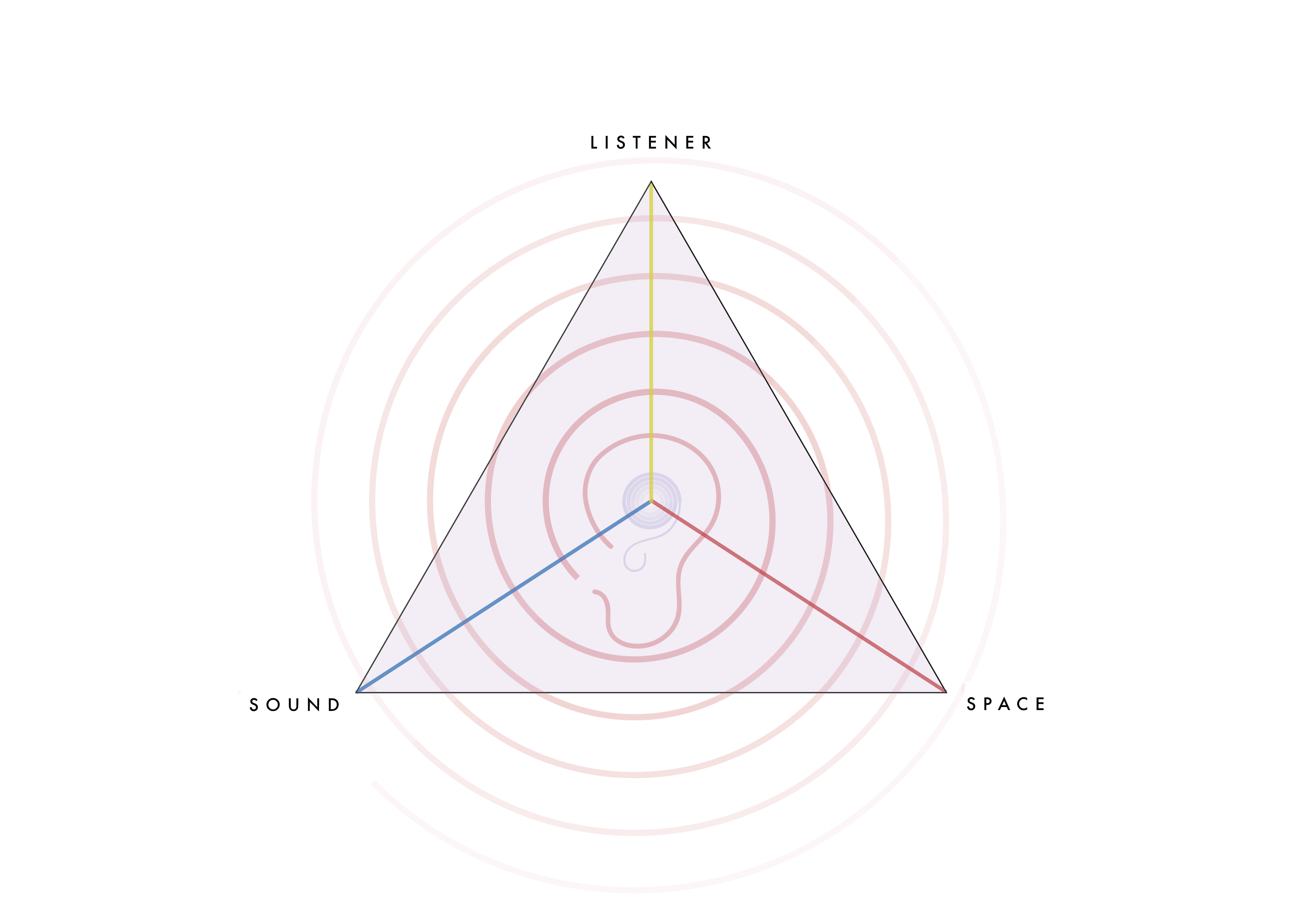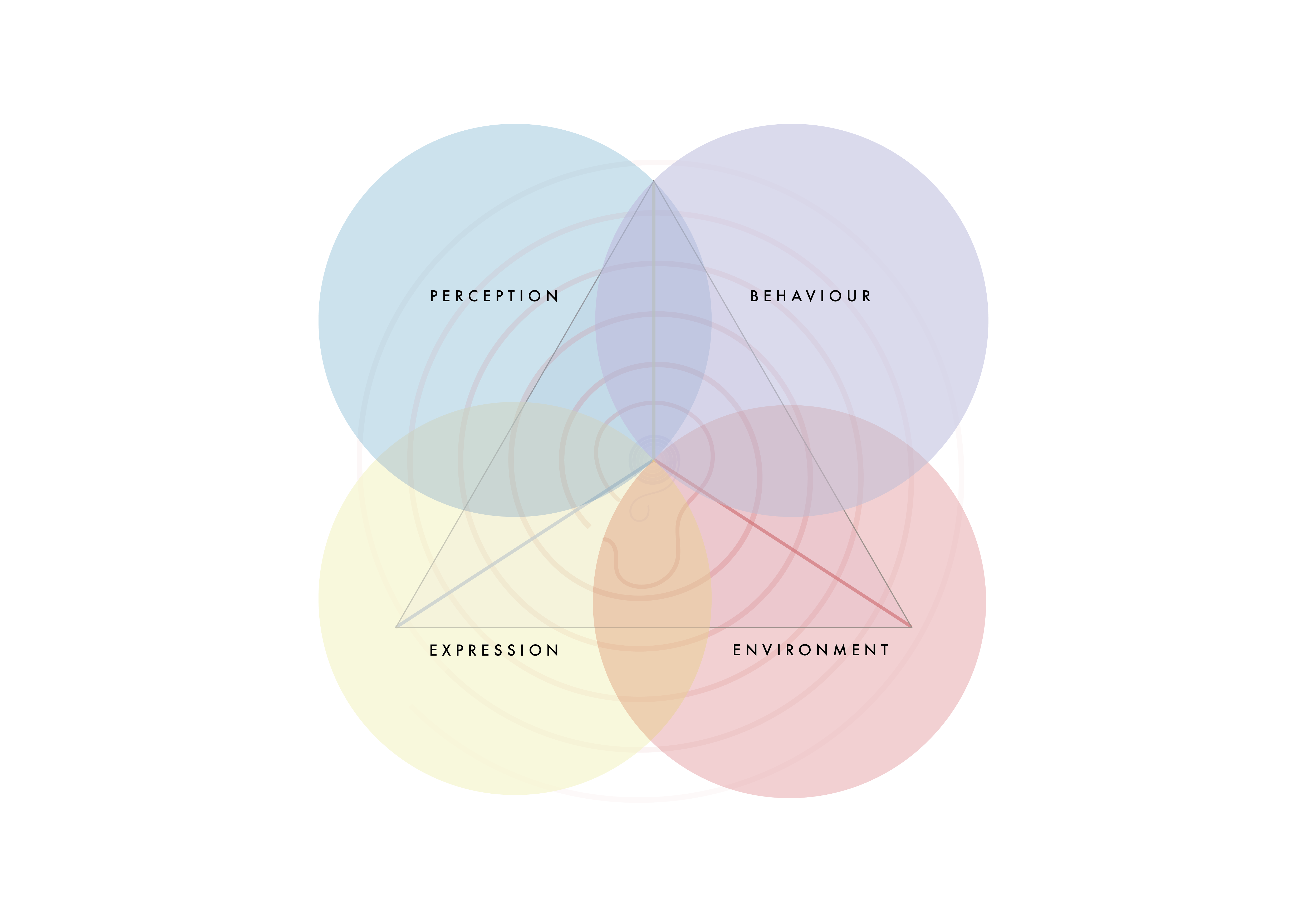Programme
The programme of the Spatial Sound Institute starts with the idea that the way we evolve our listening will be the way we evolve our environment. And the way the environment evolves, will be the way we evolve as human beings. This implies that we can positively influence the cycle and bring about systemic change in our environment by listening more attentively.
This is the Ecology of Listening.
This is the Ecology of Listening.

Listening means to bring acuity to our experience as it is unfolding, from moment to moment. Listening spatially thus provides us with an interface between the deepest levels of our inner perception and the physical phenomena as they are manifesting in the outer world. As such, spatial sound technologies present us with a Magnified Ear. With the use of such technologies, we can enrich, augment or transform our perception of space and gain deeper insight in the process of perception itself.

The medium of spatial sound is defined by the qualitative relationship between sound, the space and the listener. It follows that in the practices with spatial sound, each of these actors are regarded equally important and indissolubly connected in the process of listening
As we refine and cultivate our ability to perceive spatially, we reach new states of sensing and awareness of our environment. We gain new insight in the type of spaces we want to be surrounded by, and how we want to live within them. As we develop new conceptions of sonic spaces, new forms of expression with sound emerge. As we are able to express increasingly complex and qualitative ideas by means of space and sound, the more our ability to work with listening will expand.
As we refine and cultivate our ability to perceive spatially, we reach new states of sensing and awareness of our environment. We gain new insight in the type of spaces we want to be surrounded by, and how we want to live within them. As we develop new conceptions of sonic spaces, new forms of expression with sound emerge. As we are able to express increasingly complex and qualitative ideas by means of space and sound, the more our ability to work with listening will expand.

The practices at the Spatial Sound Institute focus on particular areas of study that emerge within this cycle of interaction: Sonic Architecture, Human Space Interaction Design, Physiology and Psychology of Listening and Spatial Memetics.
These streams encompass interdisciplinary collaboration and knowledge exchange between a variety of fields. All fields of research are welcome to apply to the programme, including but not limited to: acoustics, physics, neurophysiology, audio engineering, music composition, media design and architecture. The development of spatial sound as a medium only evolves from the interactions between these fields, not from any of these fields in and of themselves.
The Spatial Sound Institute facilitates ongoing research and development within these areas of study and stimulates cross-fertilisation and exchange between practitioners of various fields as part of our Artist Residency Programme.
These streams encompass interdisciplinary collaboration and knowledge exchange between a variety of fields. All fields of research are welcome to apply to the programme, including but not limited to: acoustics, physics, neurophysiology, audio engineering, music composition, media design and architecture. The development of spatial sound as a medium only evolves from the interactions between these fields, not from any of these fields in and of themselves.
The Spatial Sound Institute facilitates ongoing research and development within these areas of study and stimulates cross-fertilisation and exchange between practitioners of various fields as part of our Artist Residency Programme.
